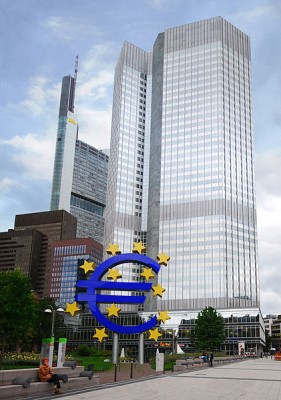The Bank of England estimated that 40 per cent of the profits accruing from an expansion of the money supply flowed directly to the richest 5 per cent of households. The policy of low interest rates destroys the value of investments with fixed rates like bonds and savings, while prices and profits of shares and real estate increase. This leads to a shift of income from the small depositors to the wealthier people. The richest 20 per cent of the population keep 30 per cent of their property in shares.
The rescue policy of the European Central Bank (ECB) makes the same mistake. The stock holders of banks and other investors of public debt were rescued at the expense of tax payers and small depositors. The ECB has been buying the public debts of countries like Greece and Portugal from banks and insurance companies, recusing the rich creditors of these countries. The ECB offers them an easy way to secure themselves against risks, and protects their property. All these risks are now in the books of the ECB, which means that the small depositors or the tax payers have to carry the burden. The Welfare State is socialism for the poor, but the monetary policy of the ECB is socialism for the rich. Thus, the rescue policy of the ECB is not only an economic, but also a social disaster.



